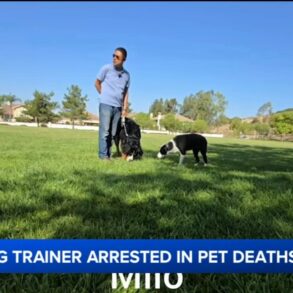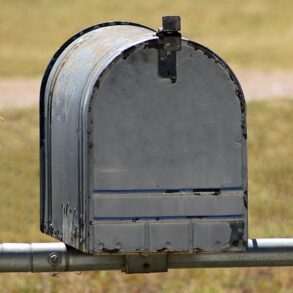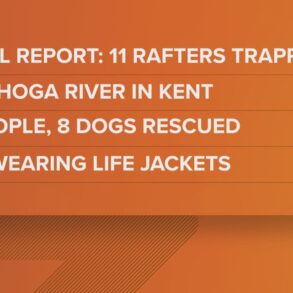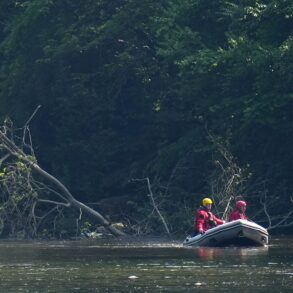
Spotted Lanternfly – Lycorma delicatula. The invasive Spotted Lanternfly on its host plant Ailanthus at Waverly Park in Connecticut. (Credit: © Jason Ondreicka | Dreamstime.com)
ITHACA, N.Y. — Man’s best friend may hold the key to stopping a devastating agricultural pest in its tracks — the invasive spotted lanternfly. That said, their superior detection abilities come with some surprising limitations, according to new research comparing canine and human detection methods.
Recent findings published in Ecosphere reveal that while specially trained detection dogs dramatically outperform human searchers in finding spotted lanternfly egg masses in forested areas, humans actually proved more effective at detecting the invasive pest in vineyards. These insights could reshape how we approach early detection of this destructive insect that threatens North America’s multi-billion dollar grape and wine industries.
“A spotted lanternfly infestation in a vineyard can cause 80% to 100% mortality of the vines in one growing season,” explains Angela Fuller, professor in the Department of Natural Resources and the Environment at Cornell University and lead author of the study, in a statement. This devastating impact is compounded by the need for increased pesticide use, with infestations resulting in a threefold increase in insecticide applications and cost increases of 170%.

First discovered in Pennsylvania in 2014, the spotted lanternfly has since spread to 18 states. The economic impact is substantial. In Pennsylvania alone, estimated losses range between $42.6 and $99.1 million for agricultural industries and between $152.6 and $263.3 million for forest industries. This planthopper feeds on at least 103 species of plants, posing a particular threat to grapes, fruit trees, and hops.
Researchers from Cornell University and partner organizations conducted field experiments across 20 vineyards in Pennsylvania and New Jersey to determine whether trained detection dogs could improve early detection of spotted lanternfly infestations compared to traditional human visual searches. The study focused on finding egg masses during winter and early spring when the insects are dormant but their egg masses remain attached to trees, vines, and other surfaces.
Two specially trained dogs — a Labrador Retriever and a Belgian Malinois — were trained initially on adult spotted lanternflies before spontaneously generalizing their detection skills to egg masses. The dogs and three human observers conducted searches along designated transects in both vineyard and forest settings. To ensure unbiased results, dogs and humans conducted their searches on different days to prevent human scents from influencing the canine detection work.

The results revealed distinct strengths for each detection method. In vineyards, human observers significantly outperformed their canine counterparts. “It was pretty easy for humans to see them, because they can do a systematic search, up and down a vine or pole,” Fuller explains. In these structured environments, humans detected approximately 31.4 egg masses per hour compared to dogs’ 24.0.
However, the situation reversed dramatically in forested areas, where dogs’ detection probability was more than three times higher than humans (51% vs. 15%). “The dogs find egg masses by smell,” Fuller notes. “So, in a very complex environment, it’s easier for a dog to smell something than it is for a human to see something that is small and cryptic.”
While both achieved similar efficiency rates in forests (humans: 7.66 detections/hour, dogs: 6.72/hour), dogs spent more time searching, resulting in more total detections. “The extra time that dogs take to find them is not as important as it is to find them in the first place, because you need to detect the egg masses in order to eradicate them,” notes Fuller.
The research yielded important insights about spotted lanternfly behavior and distribution. Occupancy probability was higher on vines within vineyards than in forests, and notably, occupancy declined with increasing distance from forests. The study found that egg masses were most likely to be found within 75 meters of forest boundaries, providing crucial guidance for focusing search efforts.
Weather conditions significantly influenced detection success. The study found that dogs’ detection probability improved with moderate winds, increasing from approximately 40% with no wind to about 60% with 16 km/h winds. However, deep snow posed challenges by limiting access to search areas and obstructing tree and vine bases where egg masses might be present.
While detection dogs require significant upfront investment in training and handling, their versatility offers unique advantages. The study dogs were also trained to detect several other invasive species, including Scotch broom, slender false brome, sticky sage, oak wilt, and kudzu, suggesting potential long-term value for comprehensive invasive species management programs.
Paper Summary
Methodology
The research team selected 20 vineyard sites across Pennsylvania and New Jersey with varying levels of known spotted lanternfly infestation. At each site, they established 12 transects in the vineyard and 12 in adjacent forested areas. Each vineyard transect included 20 vines, while forest transects stretched 27 meters. Two dogs and three human observers conducted repeated surveys, with each location receiving two dog searches and two human searches on different days. Researchers meticulously recorded detection data, search times, and environmental conditions, then analyzed the results using sophisticated statistical models that accounted for imperfect detection rates.
Results
In forested areas, dogs achieved detection rates more than three times higher than humans (51% vs 15%). However, in vineyards, humans outperformed dogs with 85% detection rates compared to 45% for canines. Search efficiency varied by environment – humans averaged 31.4 detections per hour in vineyards compared to dogs’ 24.0, while both achieved similar efficiency rates in forests (humans: 7.66/hour, dogs: 6.72/hour). Dogs showed improved detection rates with moderate winds but struggled in deep snow conditions.
Limitations
The research was conducted only in areas with moderate to high infestation levels, which may not perfectly reflect early detection scenarios where pest populations are sparse. Additionally, the study used only two dogs and three human observers, potentially limiting the generalizability of individual performance variations. Height limitations also affected both methods – neither dogs nor humans could effectively search high in tree canopies where lanternflies often lay eggs.
Discussion and Takeaways
The research demonstrates that neither detection method is superior in all situations. Instead, optimal surveillance strategies should leverage the complementary strengths of both approaches – using human observers in structured agricultural settings and detection dogs in complex forest environments. The finding that infestations concentrate within 75 meters of forest edges provides crucial guidance for focusing search efforts. The study also suggests that detection dog programs, while requiring significant initial investment, could provide long-term value through their versatility and superior performance in challenging environments.
Funding and Disclosures
The study was funded by the Cornell Atkinson Center for Sustainability. The researchers declared no conflicts of interest. The use of trade names or commercial products was noted as being for descriptive purposes only and did not imply endorsement by the U.S. government.
Publication Details
This research was published in Ecosphere (Volume 15, Issue 12) in December 2024. The paper, titled “Effectiveness of canine-assisted surveillance and human searches for early detection of invasive spotted lanternfly,” was authored by Angela K. Fuller, Ben C. Augustine, Eric H. Clifton, Ann E. Hajek, Arden Blumenthal, Josh Beese, Aimee Hurt, and Carrie J. Brown-Lima. The study was co-led by the New York Invasive Species Research Institute. DOI: 10.1002/ecs2.70113
This post was originally published on this site be sure to check out more of their content.













































